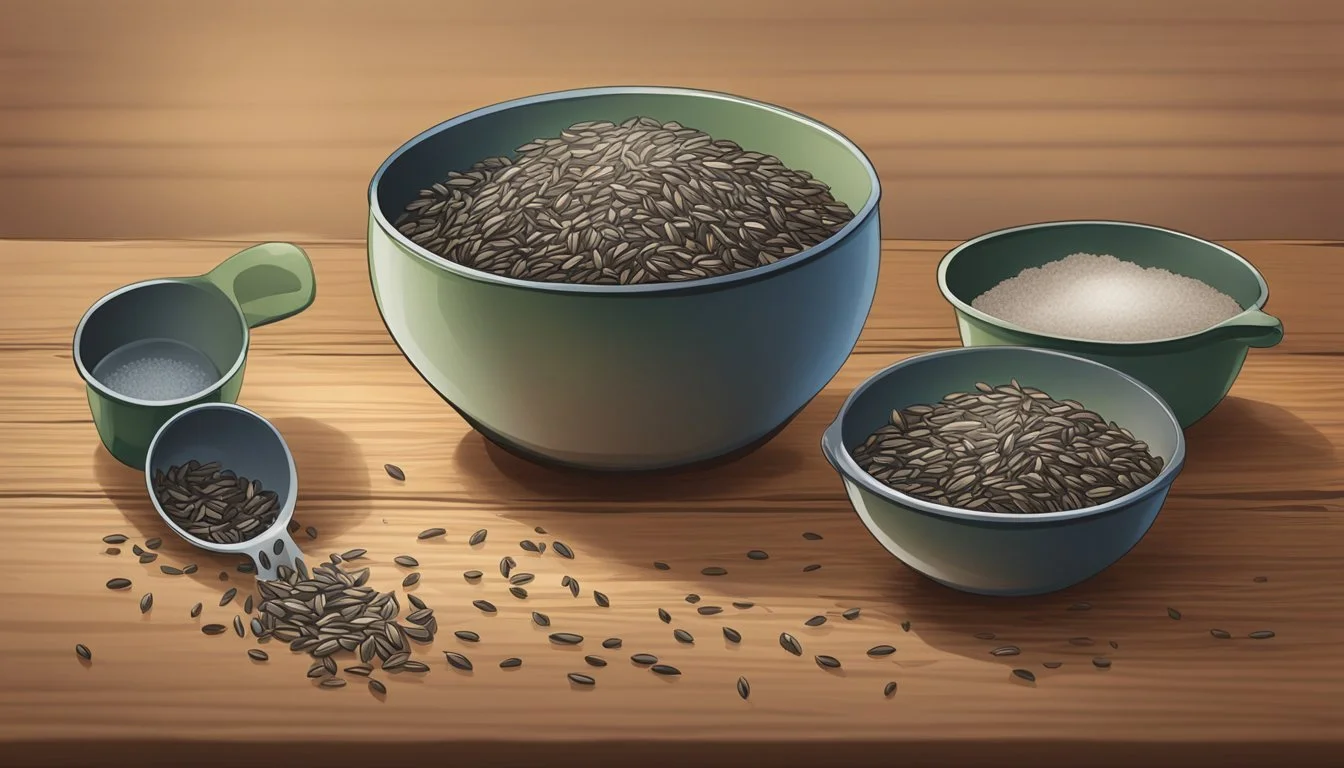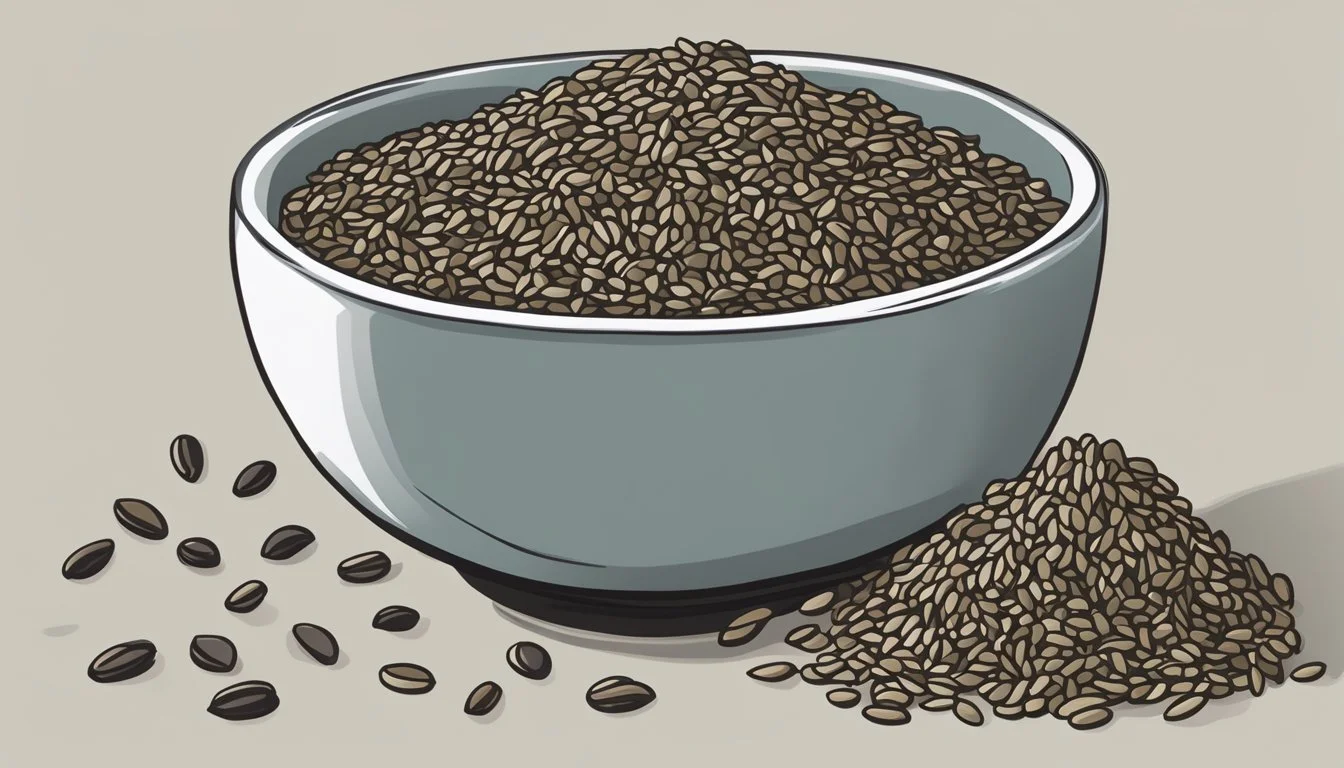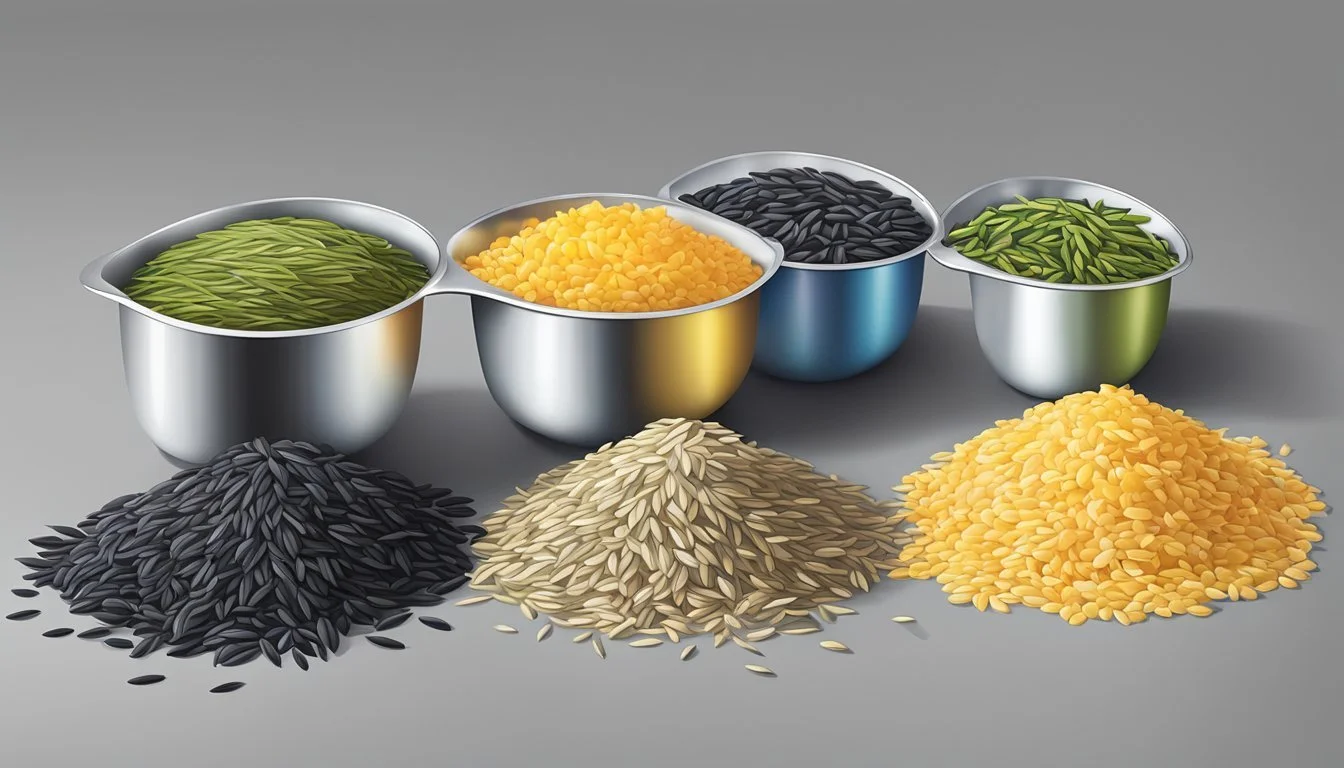How Many Cups in a Pound of Wild Rice
Accurate Measurement Guide
When cooking with wild rice, understanding measurement conversions is essential for culinary precision and diet planning. Wild rice (What wine goes well with rice?), being denser than other varieties, typically converts from pounds to cups differently than white or brown rice. In practical terms, one pound of uncooked wild rice equates to approximately 2.25 to 2.5 cups. This conversion can slightly vary depending on the type and size of the rice grains, but it remains a reliable guideline for most culinary needs.
Measuring wild rice accurately is important not only for recipes but also for dietary considerations, as portion control can significantly impact nutritional intake. It's worth noting that the texture and preference for doneness can influence the cooking process and the perceived volume of cooked rice. Some people enjoy their wild rice chewier, while others prefer it softer, which may not directly impact the pound-to-cup conversion but can change the cooked yield.
Nutritional Profile of Wild Rice
Wild rice offers a rich nutritional profile accentuated by its protein and fiber content, abundance of vitamins and minerals, and notable differences when compared to other rice varieties. It is an aquatic grass that provides a nutritious, gluten-free alternative to other grains.
Protein and Fiber Content
Wild rice is a commendable source of plant-based protein with a cooked 1/4 cup serving containing roughly 7 grams of protein. This makes it an apt choice for vegans and vegetarians. Furthermore, wild rice's fiber content stands at about 1.8 grams in a 3.5-ounce serving, contributing to digestive health and potentially reducing disease risk.
Vitamins and Minerals
A 100-gram serving of uncooked wild rice supplies notable nutrients including 45 mg of Thiamin (Vitamin B1) and 6.2 mg of Niacin (Vitamin B3), which are essential for energy metabolism. It also boasts 4.2 mg of Iron, necessary for healthy blood cells. Wild rice also contains choline, a nutrient supporting liver function and brain development.
Comparison With Other Rice Varieties
In terms of calories, wild rice provides about 101 calories per 100-gram serving when cooked, which is comparable to other rice varieties. However, its nutritional composition is distinguished by higher protein and fiber levels, and lower fat content. It imparts a unique nutty flavor to meals and is naturally gluten-free, setting it apart from conventional rice types.
Wild rice's composition as an aquatic grass rather than a true rice and its minimal fat contribution add to its distinctive nutritional benefits, making it a robust component of a balanced diet.
Measuring Wild Rice
When assessing how much wild rice corresponds to a pound, it is crucial to understand the direct correlation between weight and volume. Precise measurement techniques are important for culinary accuracy and dietary planning.
Weight-to-Volume Conversion
Wild rice's weight-to-volume conversion is an essential aspect of cooking and recipe development. Generally, one pound of wild rice equals approximately 2.25 to 2.5 US cups when uncooked. Factors such as the grain's size and density can cause variations, so it is advisable to consider these conversions as approximations.
Using Kitchen Scales
To ensure accuracy, using a kitchen scale is recommended. Measuring by weight provides a more consistent and reliable result than using a measuring cup. When a recipe calls for a pound of wild rice, placing it on the scale and adjusting to the desired weight will yield the precise amount needed for the dish.
Standard Measurement Practices
For those without a kitchen scale, standard measuring practices are a must. A standard US cup is a common kitchen measurement tool used. Wild rice should be spooned into the measuring cup and leveled off to avoid excess volume. Nevertheless, for best results, utilizing a kitchen scale and adhering to weight measurements is preferable.
Preparation and Cooking Methods
Cooking wild rice properly involves rinsing and draining the grains, using appropriate boiling and simmering techniques, and adjusting cooking times for the desired texture. Here's how to execute these steps effectively for the best results.
Rinsing and Draining
Before cooking wild rice, it should be rinsed thoroughly under cold water using a fine-mesh strainer. This process removes any debris and surface starch. After rinsing, the rice needs to be shaken off to drain as much excess liquid as possible. Proper rinsing helps in achieving a cleaner taste and better texture in the cooked rice.
Boiling and Simmering Techniques
To cook wild rice, one must first boil the water or stock in a saucepan. Standard ratios suggest combining 1 cup of uncooked wild rice with about 4 cups of liquid. Once added to the boiling liquid, the wild rice should be brought back to a boil before reducing the heat to simmer the grains. This gentle cooking allows the rice to become tender without breaking apart. It's important to cover the saucepan and maintain a low, steady simmer.
Cooking Time Variations
Cooking times for wild rice can vary significantly. On a stovetop, it typically takes 45 minutes to an hour to cook wild rice; the exact time may depend on the desired texture. Some cooking methods, like using an Instant Pot, can reduce cooking time to 22-35 minutes. It's essential to check the rice for tenderness towards the end of the cooking process and drain any excess liquid if necessary. After cooking, letting the rice stand off the heat can also help it absorb any remaining moisture, completing the cooking process and improving the texture.
Serving Suggestions and Pairings
When incorporating wild rice into meals, it is essential to consider both the dish's type and the complementary flavors and textures that enhance the rice's nutty and chewy characteristics. Here’s how to create harmonious pairings and integrate wild rice into a variety of dishes, taking advantage of its robust profile to elevate meals from simple to sophisticated.
Incorporating into Dishes
Wild rice shines as an ingredient across a diverse range of recipes. Its chewy texture makes it suitable for adding substance to soups and salads while retaining a distinct, pleasing bite. When used in stuffings, wild rice contributes a richness that complements meats such as turkey or chicken, creating a texture and flavor contrast that enhances the overall dish.
Salads: Mix wild rice with greens, and dress with a vinaigrette for a satisfying balance.
Soups: Add to vegetable broths for heartiness, allowing its chewiness to contrast with softer ingredients.
Side Dish and Main Course Ideas
Wild rice serves as an elegant side dish, but can also stand as a main course when paired correctly:
Side Dish: Simple seasoning with salt and herbs can let wild rice's natural flavors stand proud beside proteins.
Main Course:
Pair with grilled fish or chicken for a meal that balances light and decadent textures.
Incorporate into casseroles for a hearty, one-dish meal that is both filling and flavorsome.
Complementing Flavors and Textures
The nutty flavor of wild rice pairs well with a variety of ingredients. Bold and earthy root vegetables, such as beets in a beetroot salad, can complement wild rice's hearty essence. Creamy elements like butter and sour cream in mashed potatoes balance its chewiness with richness and smoothness.
Textures: A creamy element, such as mashed potatoes made with butter and cream, contrasts the rice's chewiness.
Flavors:
Nutty: Wild rice’s nutty flavor profiles are echoed in ingredients like mushrooms and toasted nuts.
Sweet and Acidic: Accent the rice’s richness with sweet and acidic components such as dried fruits (What wine goes well with dried fruits?) or a balsamic glaze.
Understanding Rice Varieties
When discussing rice varieties, it is essential to distinguish them based on their characteristics and geographical origins. Recognizing those differences allows for accurate measurement and culinary application, specifically concerning the type and amount of rice used in recipes.
Characteristics of Different Rice Types
Different types of rice exhibit unique features such as grain size, texture, and flavor. White rice and brown rice are the most common categories, with brown rice retaining its outer husk and offering a chewier texture and more fiber. Long-grain white rice, including popular varieties such as basmati and jasmine rice, tends to cook up fluffier and with grains remaining distinct, while short-grain rice becomes stickier, making it ideal for dishes like sushi.
Basmati rice: Aromatic, slender grains known for its nutty flavor, commonly used in Indian and Middle Eastern cuisines.
Jasmine rice: Also aromatic, but with a slightly softer and stickier consistency when cooked, favored in Southeast Asian dishes.
Rice measurement can vary depending on the rice type due to these characteristics, as different grains absorb water and expand to varying degrees.
Geographical Origins
The climate and conditions of the region where rice is grown profoundly impact its quality and attributes. California, Canada, and Minnesota are known for producing high-quality wild rice, an entirely different species from common white and brown rice, which is often praised for its nutty flavor and chewy texture.
Here is a brief overview of rice types and their origins:
White rice: Typically grown in tropical and subtropical regions, can come from a variety of places including the Southern United States and Asia.
Brown rice: Cultivated globally like its white counterpart but retains more nutrients due to less processing.
Basmati rice: Hails predominantly from India and Pakistan, where unique weather conditions impart the grain with its distinctive aroma.
Jasmine rice: Native to Thailand, its scent is often likened to that of pandan leaves, a common ingredient in Southeast Asian cuisine.
Beyond these, alternative grains like quinoa have gained popularity. Although not technically a rice, quinoa is often used as a substitute due to its similar cooking process and health benefits, originating from the Andean region of South America.
Practical Tips for Rice Storage and Use
When storing and using wild rice, one must address its unique nature compared to more common varieties. Proper storage of both uncooked and cooked wild rice maximizes its longevity and quality, ensuring safety and palatability.
Storing Uncooked and Cooked Rice
When dealing with uncooked wild rice, it should be stored in a cool, dry place, away from heat sources and humidity, to prevent spoilage. Using airtight containers can also help protect it from contaminants and pests. As for cooked wild rice, the expansion that occurs during cooking means that one cup of uncooked rice will typically yield approximately three cups of cooked rice. It can be refrigerated for 4-6 days or frozen for longer-term storage.
Safety Considerations
It's important to handle wild rice correctly to avoid food-borne illnesses. Raw rice may contain Bacillus cereus, a bacterium that can lead to food poisoning. Thus, cooked rice should never be left at room temperature for more than two hours. In addition, consumers may be concerned about potential contaminants like lead, which can be found in some foods according to FoodData Central; however, varying rice by type and origin can manage this risk.
Maximizing Rice Shelf Life
Wild rice's shelf life can be significantly extended by adhering to proper storage techniques. An unopened package of wild rice can last up to 3-4 years if kept in a cool, dark pantry, and even longer if stored in the freezer. Once opened, transferring it to a sealed container in the pantry or freezer will help preserve its quality. Cooked wild rice should be cooled rapidly before storing and kept in an airtight container to maintain freshness when refrigerated or frozen.
Calculating Rice Quantities for Recipes
When it comes to determining how much wild rice is needed for a recipe, accurate conversions between cups and pounds are essential. This ensures a successful dish with the correct serving size.
Adjusting Measurements for Various Servings
To alter the amount of wild rice in a recipe, one must understand that wild rice, being lighter than white rice, typically measures about 3 cups per pound. Here’s a simple breakdown for serving adjustments:
1/3 pound of wild rice = 1 cup
2/3 pound of wild rice = 2 cups
1 pound of wild rice = 3 cups
When cooked, wild rice triples in volume, yielding nearly three times the original measurement. Therefore, 1 cup of uncooked wild rice results in approximately 3 cups of cooked rice.
Conversion Tips for Rice Recipes
When translating recipes designed for different rice types to wild rice, keep in mind that each rice variety has unique characteristics in both weight and volume. Utilize the below table for general conversions involving wild rice:
Uncooked Wild Rice Cooked Rice Yield 1 cup ~3 cups 1/2 pound ~1.5 cups 1 pound ~3 cups
Reminder: The actual measurement may vary slightly depending on the brand and age of the rice. To be precise, it's recommended to use a kitchen scale for weighing. When converting from another type of rice to wild rice in a recipe, one must adjust the amount to reflect the lighter nature of wild rice. For instance, if a recipe calls for 2 cups of long-grain white rice, one would need approximately 1.5 cups of wild rice to match the expected yield.








